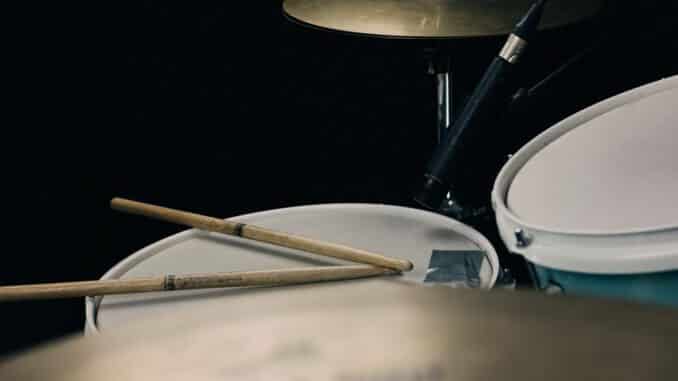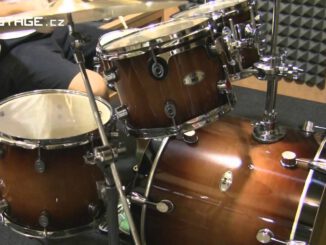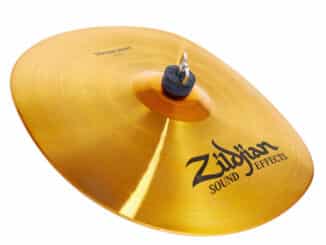

Rudiment Round-Up
Lesson 1: Why you need ‘em! An introduction
Well partners, this, I‘m afraid, is something that I encounter far too often in the real world… maybe some of you do too. You’re minding your own business, picking up a new pair of sticks and a fruit shaker at the local Guitar HQ when, all of a sudden, you’re under siege by some twenty-something hipster in skinny jeans who thinks he’s being artful (and obstinate about it) when in reality, he’s just whacking off in public. You’re helpless; it’s just like 3rd-grade grammar class when your teacher picked the “slow kid” to read all you can do is stand there and take it. I realize that no one reading this would ever freely admit to committing such a vulgar display of public fugga-duggaery. But (just between us) if you’re reading this and want to free yourself from the limits of your own expression, there is a good place to start. Rudiments!
Rudiments are not the cherub like monsters that you battle in some online video game, nor are they some tasty chocolate covered raisin snack found in the seats at the movie theatre! Rudiments are the building blocks of drumming, the atoms of groove, the broken-down bits of the beat and they are good! Rudiments are the sounds and rhythms that make up our drumming vocabulary. Guitarists have scales and chords, we have rudiments and you’re probably already using them more than you think. Learning the rudiments can seem a bit intimidating at first, but really they’re pretty simple. Basically it comes down to strokes played with either the R (right) hand or one played by the L (left) hand. Here are some examples to get you started:
- The Single Stroke Roll
 is played RLRLRLRL this is the one everyone does on the table when someone says “drum roll please!” it’s also used when playing Tympani, Marimba, Conga, Djembe.
is played RLRLRLRL this is the one everyone does on the table when someone says “drum roll please!” it’s also used when playing Tympani, Marimba, Conga, Djembe. - The Double Stroke Roll
 is played RRLLRRLL and is the basis of many rolls used on the kit in jazz and rock, as well as marching and concert snare drum.
is played RRLLRRLL and is the basis of many rolls used on the kit in jazz and rock, as well as marching and concert snare drum. - The Paradiddle
 (my personal favorite) is played RLRR-LRLL-RLRR-LRLL and is the basis of a ton of cool applications and is also a great warm-up all by itself. I hope you’re starting to see just how cool rudiments can be.
(my personal favorite) is played RLRR-LRLL-RLRR-LRLL and is the basis of a ton of cool applications and is also a great warm-up all by itself. I hope you’re starting to see just how cool rudiments can be.
Mastering just a few, can really make you a better player, plus you won’t be nearly as annoying when you’re slamming away at Guitar HQ.
Now, go dust off that practice pad your mom got you for your birthday, grab your favorite pair of sticks and check out some rudiments. A couple of great places to start are www.drumrudiments.com a site I found after a simple search, here you’ll have a chance to see and hear all 40 of the rudiments played from a slow to fast. Another great resource is The Percussive Arts Society www.pas.org This is a site you should have bookmarked anyway, it’s just a great resource for all things drum! Lastly, go find a rudiment tutor or someone who’ll give you rudiment lessons. Once you get these simple patterns in your hands and start applying them to the kit, you’ll be amazed at what you can do.
Now get out there and start learning something!
Drum Rudiments Lesson 1 – Single Stroke Roll
Rudiment Round-Up Lesson 2: Rolls
![Rudiment Round-Up - Drum Lessons [Detailed Drum Lessons] 1 drum lessons Rudiment drumer](https://gear-vault.com/wp-content/uploads/2009/10/drum-lessons-Rudiment-drumer-scaled.jpg) Well folks, its time for you to sit up straight, sticks in hand, mouths shut, eyes front and center! Today let’s get you familiar with the wonderfully tasty little rudiment that is the roll. Rolls are used to give the drums a sense of sustain. They’re how we drummers hold the snare drum note to increase tension in the music and how we call attention to an important happening.
Well folks, its time for you to sit up straight, sticks in hand, mouths shut, eyes front and center! Today let’s get you familiar with the wonderfully tasty little rudiment that is the roll. Rolls are used to give the drums a sense of sustain. They’re how we drummers hold the snare drum note to increase tension in the music and how we call attention to an important happening.
The Star-Spangled Banner starts with a snare drum roll! Rolls come in many shapes and sizes, but are all made using the same sticking pattern… RRLL, RRLL, RRLL, RRLL. There are long rolls, buzz rolls, numbered-stroke rolls, closed rolls, dinner rolls, sushi rolls, all kinds of rolls… I digress. The common building block to them all is the sticking: RRLL.
To get started, tap your practice pad once with each hand and allow the stick to rebound naturally. R! L! R! L! It should be a relaxed and controlled stroke and should end in about the same position as it started. Now tap your pad allowing the stick to bounce loosely like a basketball. Rrrrrrr…. Lllllll…. Get a feel for the stick’s natural tendency to bounce as well as how easily it bounces in your hand. IMPORTANT! Never grip the stick too tight or too loose and always keep all of your fingers on the stick, “fly-away” finger limit your control! Just keep them along for the ride.
Once you have the feel of the stick’s bounce and balance, tap your pad with a controlled double strokes RR! LL! RR! LL! Note, there is a difference between “struck” double strokes and bounced double strokes and for good reason. There is a speed threshold for “struck” double strokes and once you get to that point your arms will tighten up and you’ll lose control of the roll. You’ll find that by allowing the second stroke to “bounce” it will enable you to stay relaxed and continue increasing your roll speed. RrLl, RrLl, RrLl, RrLl. As you get better at controlling your bounced strokes, you’ll be able to “blur” the line between the two and perform a seamless “buzz roll” or “pressed roll”.
The next time you stand during our National Anthem, pay close attention to the rolls that are played almost all the way through it.
Drum Rudiments – Double Stroke Roll Video DemonstrationD
Rudimental Round-Up Lesson 3 – The Drum Flam
![Rudiment Round-Up - Drum Lessons [Detailed Drum Lessons] 2 drummer chad smith rudiments](https://gear-vault.com/wp-content/uploads/2009/11/drummer-chadsmith-rudiments.jpg) After finally recovering from a turkey induced coma, I figured it was time to get ya’ll a little learnin’ to do. You’re gonna love this little honey – Ladies and gentlemen, boys and girls I present to you The Flam. The Flam is innate, it is primitive and it is so simple yet so powerful that when delivered correctly it can make people jump to their feet and scream! It also comes in handy when you want to play a waltz or a parade march by Maestro John Phillip Sousa! I digress…
After finally recovering from a turkey induced coma, I figured it was time to get ya’ll a little learnin’ to do. You’re gonna love this little honey – Ladies and gentlemen, boys and girls I present to you The Flam. The Flam is innate, it is primitive and it is so simple yet so powerful that when delivered correctly it can make people jump to their feet and scream! It also comes in handy when you want to play a waltz or a parade march by Maestro John Phillip Sousa! I digress…
The Flam is played by throwing both hands at the same time from two different levels. Huh? Okay, I’ll explain…a Right-Hand Flam has a Left-Hand stroke that occurs just before the Right (LR) and as you’d expect, a Left-Hand Flam has a Right-Hand stroke before it.
The trick is to play these “pre-strokes” from a lower stick level than the main stroke but throwing both sticks at the same time. The stick closer to the drumhead is heard just slightly before the main stick’s attack and at a lighter volume; this creates the effect of a fatter, fuller more luxurious note. If you’ve got both sticks at the same level you may end up with a sound something like a toddler banging away on his/her high-chair. A good example is a difference between the words “lam” and “Flam”, when you’re doing it right you’ll hear it, but be careful not to play “fuh-lam”.
Now go get ready for your Christmas concert and learn something!

 (my personal favorite) is played RLRR-LRLL-RLRR-LRLL and is the basis of a ton of cool applications and is also a great warm-up all by itself. I hope you’re starting to see just how cool rudiments can be.
(my personal favorite) is played RLRR-LRLL-RLRR-LRLL and is the basis of a ton of cool applications and is also a great warm-up all by itself. I hope you’re starting to see just how cool rudiments can be.


I should make this my ringtone.